In Meknes, you can explore the architectural legacy of Sultan Moulay Ismail, including the monumental Bab Mansour gateway and his mausoleum, along with a worthwhile old town.

Introduction to Meknes city Morocco

The Moroccan city of Meknes was founded in the 10th century by a Berber tribe called the Meknassa but it was the Alaouite Sultan Moulay Ismail who put the city on the map when he chose it as the site for his new capital in the late 17th century.
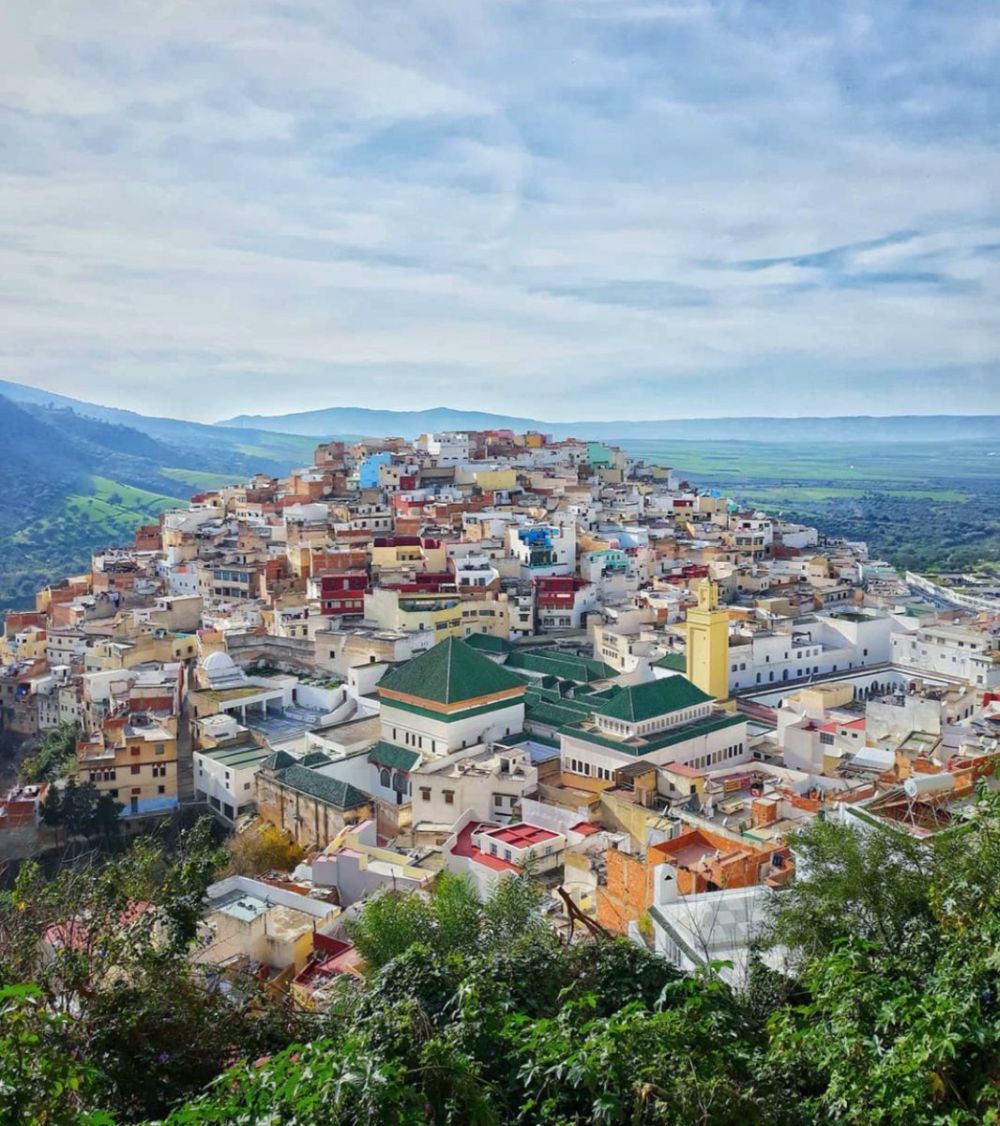
Meknes city Morocco
It is the fourth Imperial City of Morocco and the fifth largest in the country. It is somewhat overshadowed by both Fez and Marrakech, the more “busy” Imperial Cities, but Meknes is also well worth a visit for its rich history and culture.
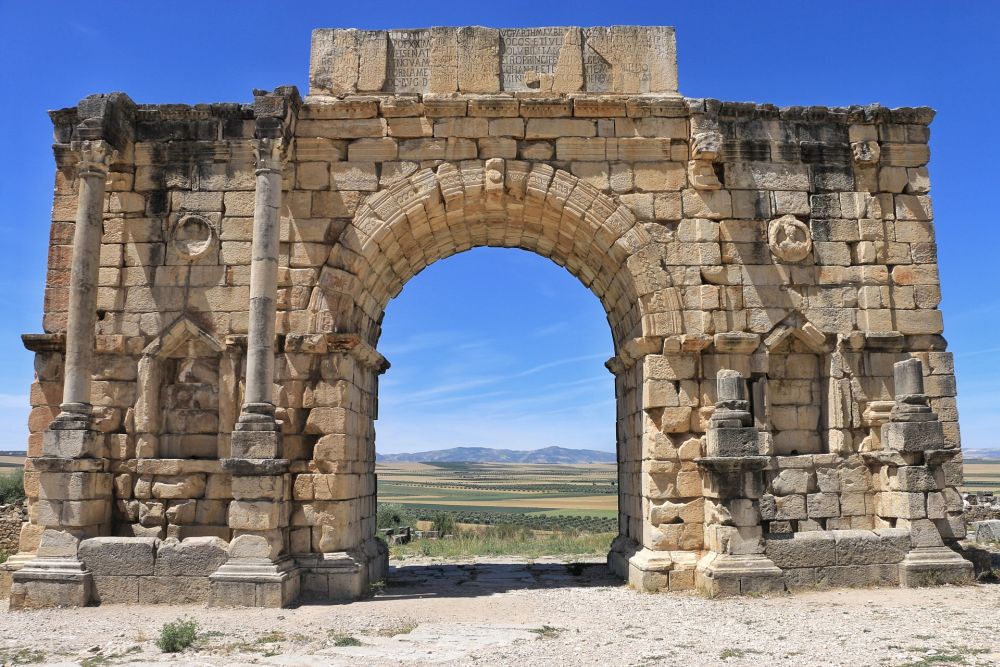
Typical buildings in Meknes.
History of the city of Meknes Morocco
The city of Meknes Morocco was built as the capital of Morocco on a fertile plain in the northern Middle Atlas (near Fez) by Sultan Moulay Ismail, one of the first rulers of the Moroccan Alawite dynasty.

Moulay Ismail came to power in 1672 at the age of 26 and reigned for 55 years. When a French princess refused his hand in marriage, the young king vowed to build a magnificent palace town to rival Versailles. He put 50,000 workers to work, built a series of palaces, miles of walls, battlements and ramparts, and a vast marketplace.
The imperial city of Meknes was completed by Moulay Ismail’s son Moulay Abdallah (1727-1757) and his grandson Sidi Mohamed ben Abdallah (1757-1790). By the early 19th century, Meknes was no longer the capital of the empire and had fallen into neglect. It was not until the reign of Moulay Hassan at the end of the century that the city was restored and revived.
Meknes was recognized as a UNESCO World Heritage Site in 1996 and its beauty has been carefully and delicately preserved. Even the construction of the city’s urban areas features a blend of Islamic and European architectural styles.
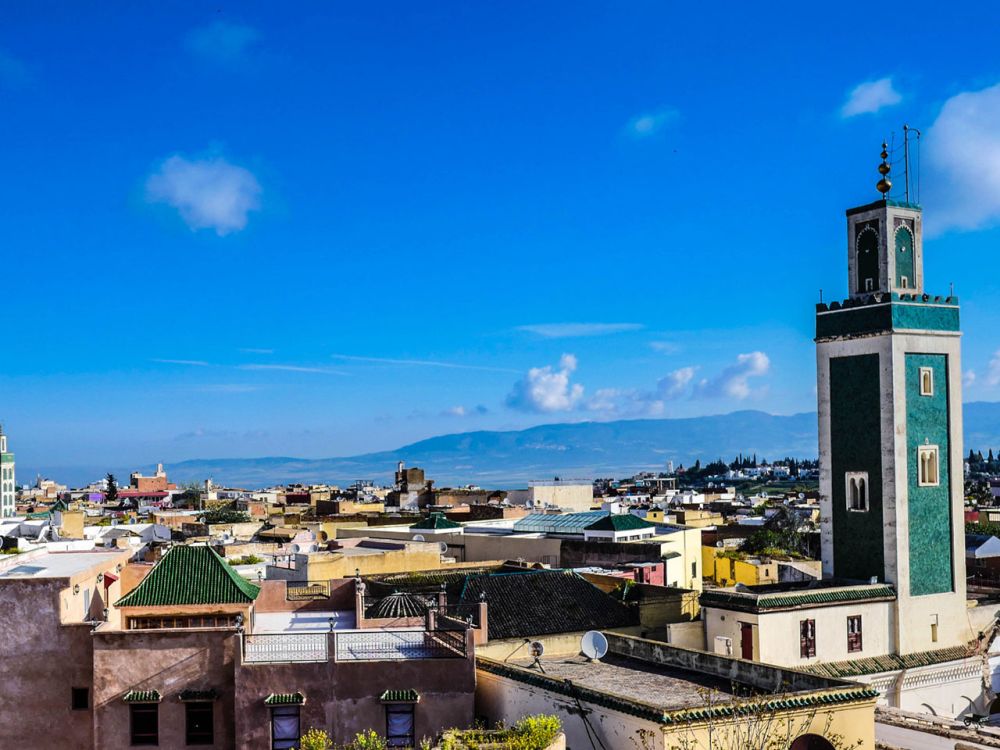
Meknes was built to be the capital of Morocco.
Things to do in Meknes Morocco
Walking among the Roman Ruins of Volubilis
The ancient Roman ruins of Volubilis, located about 29 km from the center of Meknes, are the main tourist attraction of the Moroccan city of Meknes. It is Morocco’s most famous Roman ruin, perched atop a hill with the countryside stretching out below. Volubilis contains the remaining columns and fragments of the Volubilis Temple.

Although much of what was excavated here is now on display in Rabat’s Archaeological Museum, many of the beautiful and intricate floor mosaics in the grand Roman villas of Volubilis remain in situ, giving you a sense of the splendour of wealthy Roman life.
The city’s heyday was between 24-285 AD, when it was the capital of a Roman province, and most of the ruins date from this prosperous period. Of particular interest are the House of Orpheus, the House of the Athlete and the House of the Labours of Hercules, with their exceptionally well-preserved mosaics.
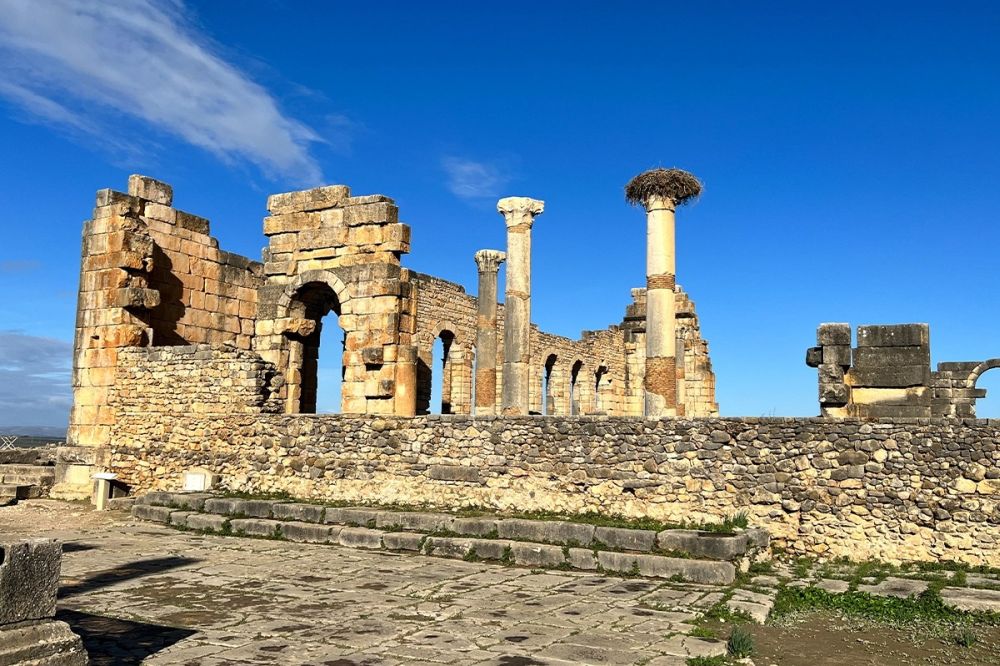
Roman ruins of Volubilis.
Photographing the pastel-painted alleys of Moulay Idriss
Founded in 788 AD, the holy city of Moulay Idriss is named after the country’s most revered saint and great-grandson of the Prophet Muhammed, who founded the first Moroccan state. The city is built on the rocky outcrops of the Khyber and Tazga hills, about 29 km north of Meknes, with buildings cascading dramatically downhill.
For religious believers it is an important pilgrimage centre and the annual religious festival in August attracts thousands of people who pitch tents around the town.
Although non-Muslims cannot enter the town’s mosques, you can wander through the medina (old town) with its narrow, pastel-painted streets, up the hillside streets above and take in the views from the rooftop terraces. Moulay Idriss is on the same street as Volubilis, so you can easily stop by on your way in.
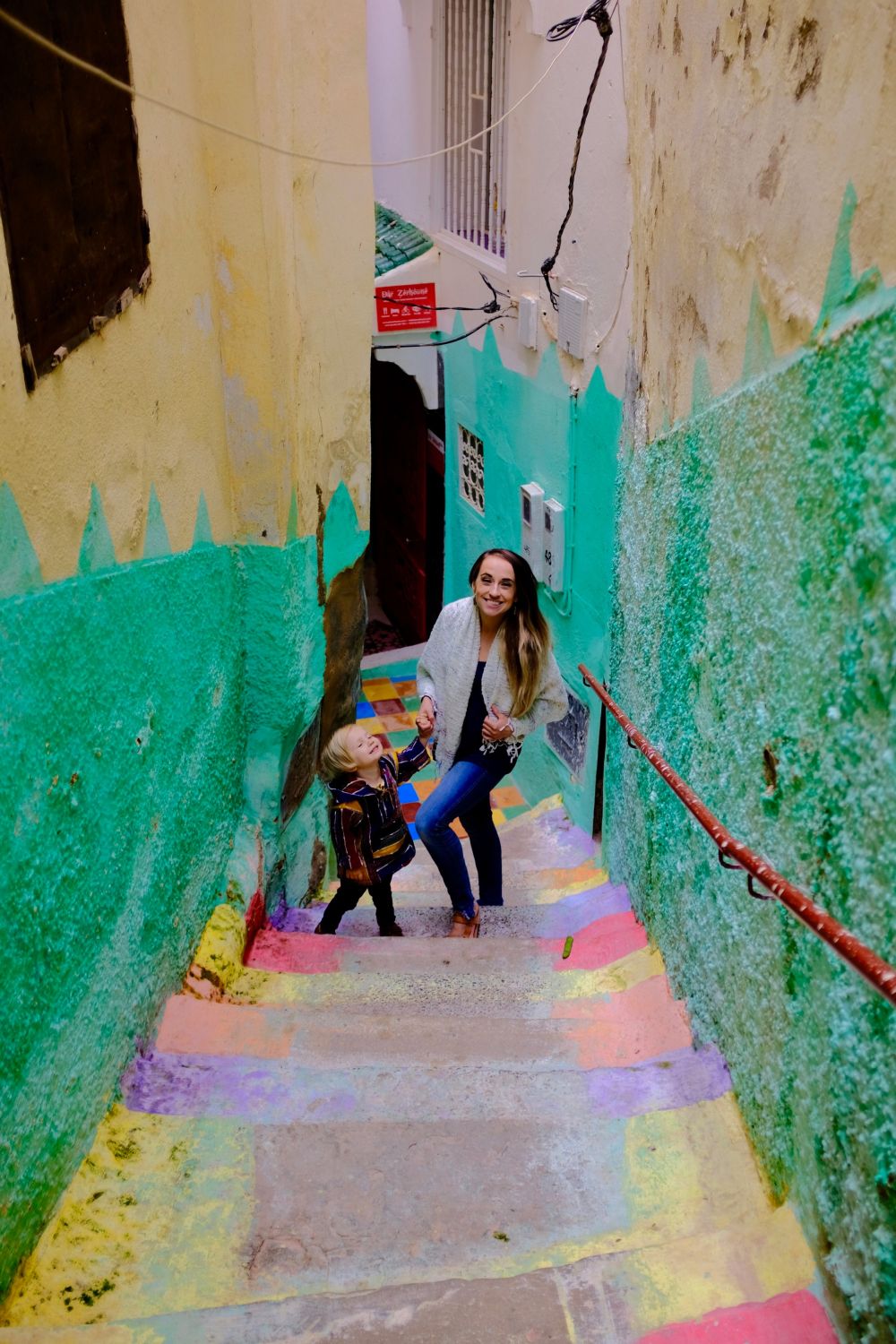
The pastel-painted alleys of Moulay Idriss.
Admire the art of Bab al-Mansour
Bab al-Mansour is the main gate between the old town of Meknes and the districts of Meknes, Morocco. It is a large and intricately detailed structure that is considered by many architectural experts to be one of the finest surviving examples of gates in North Africa. The building was completed in 1732 by Sultan Moulay Ismail. However, the construction was completed after his reign.
The intricate architectural details on the gate include the lavish use of zellige tiles and the mastery of stone carving. Today, the gate does not actually open. Instead, you enter and exit between the old town and the city through a much smaller side gate. This allows you to fully appreciate the art of Bab al-Mansour without being affected by traffic.
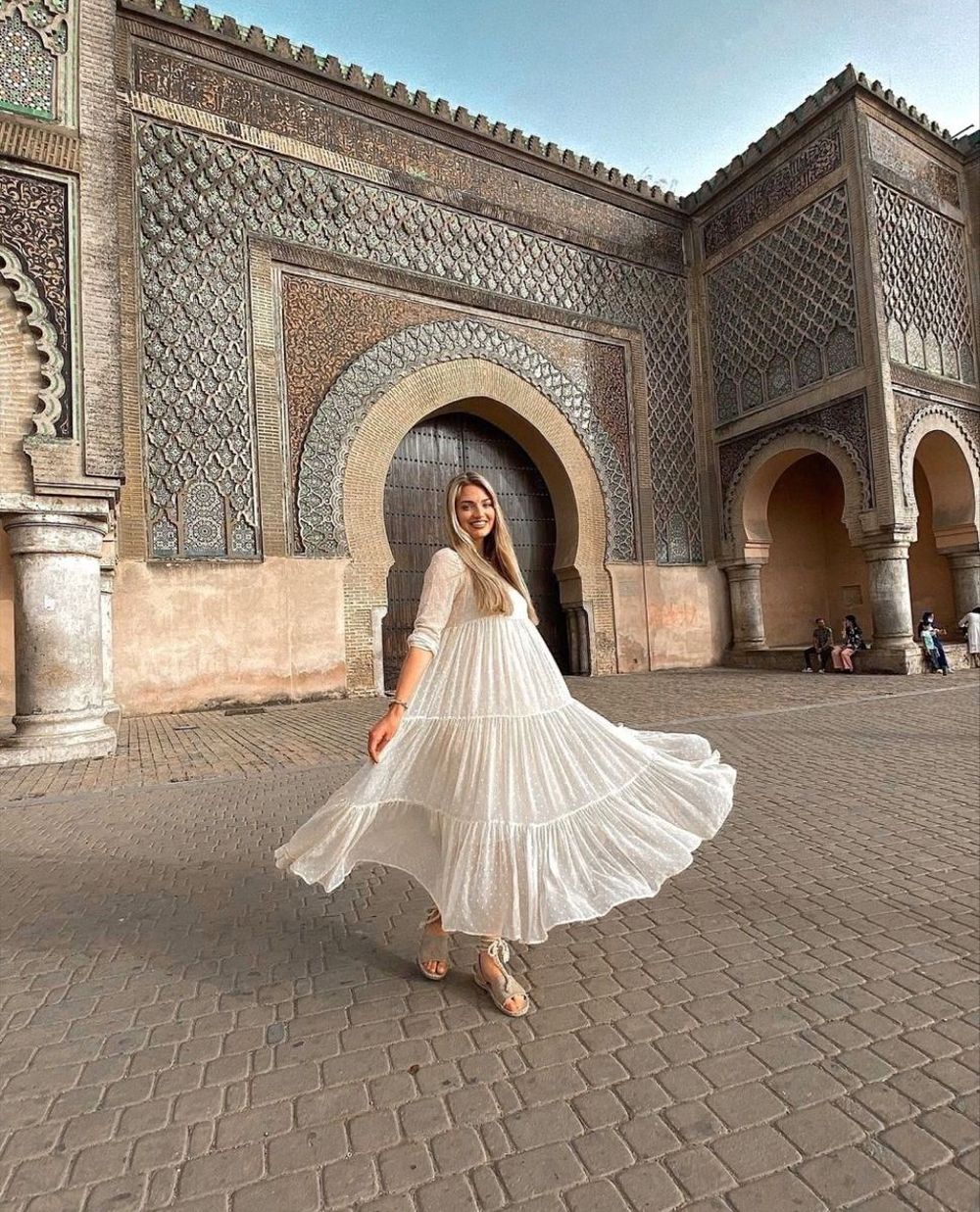
Bab al-Mansour Gate.
See Mausoleum of Moulay Ismail
The Mausoleum of Moulay Ismail was built as the burial place of Sultan Moulay Ismail, who made Meknes his capital in the 17th century. Moulay Ismail was one of Morocco’s most famous rulers. It was under his reign that Morocco as we know it today was born, during which he sought to reclaim territory from both the British and the Spanish.
The interior of the tomb is lavishly decorated, with typical Moroccan religious style, featuring intricate tile work, stucco decoration and carved stonework.
Visitors can enter the outer parts of the complex and into the main mausoleum hall. Remember to remove your shoes when entering, wear conservative clothing and don’t forget to tip the caretakers.

Mausoleum of Moulay Ismail
Stroll through Meknes Medina
Meknes medina (Old Town) is a vibrant, bustling place with many local shopping markets and winding streets. The main entrance is through Place el-Hedim, a smaller and less crowded version of Marrakesh’s Djemaa el-Fna.
For shopping enthusiasts, this is a top destination with Souk Najarine featuring textile stalls and Souk Sebbat home to traditional craft shops as well as Morocco’s famous clothing and slippers.
In Meknes medina, visitors will find handicrafts at better prices than in Marrakesh. The 12th-century Great Mosque with its distinctive blue-tiled roof is located right in the heart of the old town, making it easy to navigate.
Meknes medina is still surrounded by ruined walls, some of which are still intact. They were built during the reign of Sultan Moulay Ismail, when he made Meknes his capital.
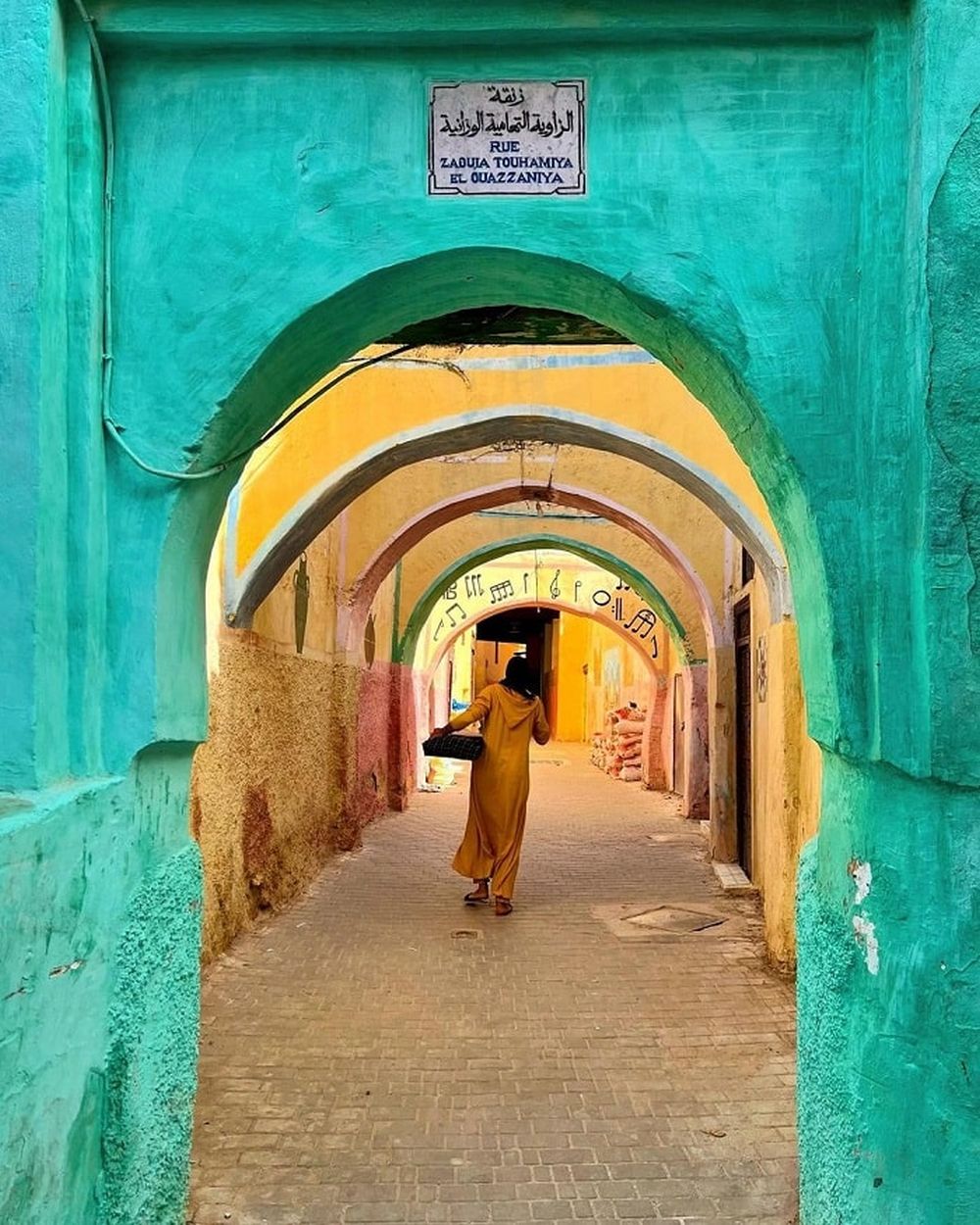
Meknes Medina
Explore the city’s architecture
The Meknes area has many interesting old monuments to explore, most of which date back to the reign of Sultan Moulay Ismail, when Meknes enjoyed its heyday as the capital of Morocco. Most visitors come here to see the Mausoleum of Moulay Ismail, but if you have time, you should spend more time here. Visitors can also visit the Koubat Al Khayatine, the city’s former embassy building, part of which is now open to the public. There is a small photo exhibition of Meknes here.
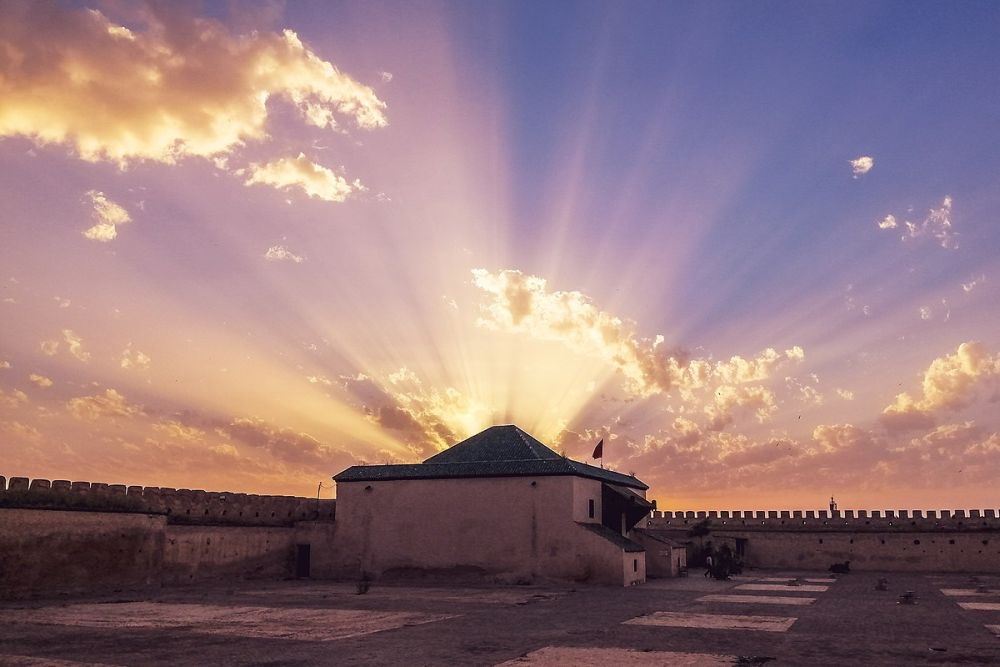
Koubat Al Khayatine Building
Visit Heri es-Souani (Royal Stables)
A 2km walk from the centre of Meknes, Morocco, takes you to the colossal Heri es-Souani buildings, which were once the granaries and stables of the Royal City. Up to 12,000 horses were originally kept here and the building is thought to have been much larger than the layout you can see today. The complex has only been partially restored and is roofless, but its arched doorways and vaulted ceilings are still intact.
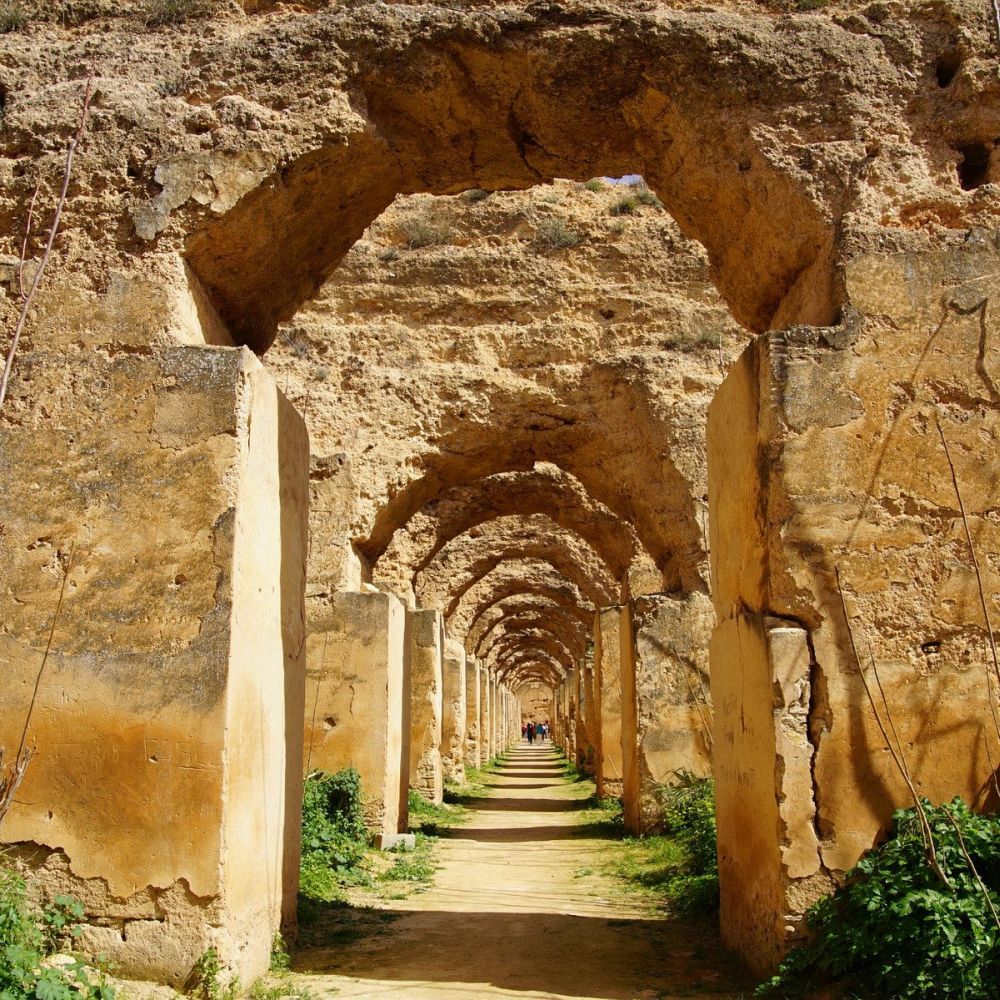
Heri es-Souani
The Moroccan city of Meknes may not be as famous as nearby Fes, but it is still a worthwhile destination for visitors to Morocco. It boasts a fascinating centuries-old past with bustling markets, mosques, Roman ruins and more, all of which attract a large number of visitors.




